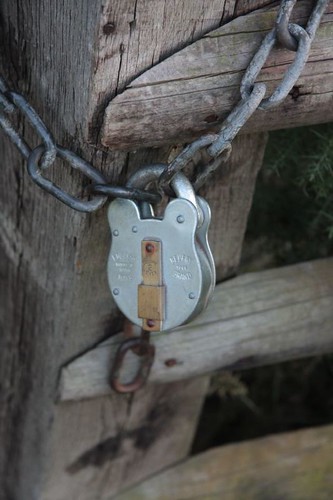Darren Bartlett outlines the options.
With a new Computing curriculum that focuses on students learning to code and writing simple programs it’s important for school ICT and Computing heads, teachers or those responsible for ICT/Computing to make sure their school network is secure and able to handle the new requirements without compromising the rest of the system.
Here are a few considerations to help with that and make sure your data is safe and the students can enjoy exploring new learning securely.
 This is possibly taking security too far!
This is possibly taking security too far!
1. Setup a separate segment on your network for coding and programming
This is called a VLAN or “virtual” LAN and allows you to split the network into separate secure areas that can isolate the coding and programming from the rest of the network. Most advanced modern network switches support this feature and it can also help increase performance, manageability and scalability on larger campuses.
2. Secure your Wi-Fi network
Many schools are embracing Wi-Fi and allowing students and staff to bring their own devices and use the Wi-Fi. Many though still don’t operate a secure Wi-Fi network, which a few simple steps can resolve.
a. Turn off the SSID on the access points. This “broadcasts” the name of the Wireless network so that mobile devices can find it. You’ll have seen this at home when you scan and see your home network “BTHomeHub” or similar, or at the coffee shop “Starbucks WiFi”.
Once turned off this makes the wireless network more secure as it won’t appear on any scan from a mobile device.
b. Operate a separate Wi-Fi access point for visitors. This is a simple step that allows visitors to use your internet connection without them having access to the main network.
c. Make sure that you use a secure password for the Wi-Fi. Don’t be tempted by easy to remember password like “schoolnameWiFi” or “WirelessSchoolname”. These may be easy to remember but are also easy to “crack” for those wanting to access you Wi-Fi without permission.
d. Go for a Wi-Fi system that can provide reporting on application use, devices connected, bandwidth used and can let you see exactly what’s happening on your network.
3. Make sure you have up to date and sufficient Anti-virus
Anti-Virus software isn’t just to prevent you opening malicious attachments in emails, it also protects against downloading malicious files and looks out for “spyware” that you might know better as a “worm”. This doesn’t necessarily destroy data or make your system unusable but sits in the background and uses your PC or Network to carryout particular tasks like sending spam emails for example.
With the advent of coding in ICT and the inevitable need to download, it’s vital that your school network is secure and protected from this type of infection to enable your pupils and staff to feel comfortable in maximising the opportunity that the new curriculum will bring.
About Darren Bartlett
 Darren has been involved in ICT for almost 30 years as owner of a successful IT support and services business working in education and business. He has also serves as a governor in a primary school for 5 years and has helped them to form and run an ICT steering committee. Darren is also the Managing Director of UNS Unique Network Solutions Ltd, www.uniquenetworks.co.uk, which provides technical solutions and support for schools.
Darren has been involved in ICT for almost 30 years as owner of a successful IT support and services business working in education and business. He has also serves as a governor in a primary school for 5 years and has helped them to form and run an ICT steering committee. Darren is also the Managing Director of UNS Unique Network Solutions Ltd, www.uniquenetworks.co.uk, which provides technical solutions and support for schools.
This article first appeared in Digital Education, the free newsletter for those with a professional interest in educational ICT and Computing. One of the benefits of subscribing – apart from access to unique content – is articles in a timely manner. For example, this article was published in the April 2014 edition.To sign up, please complete the short form on our newsletter page. We use a double opt-in system, and you won’t get spammed.
